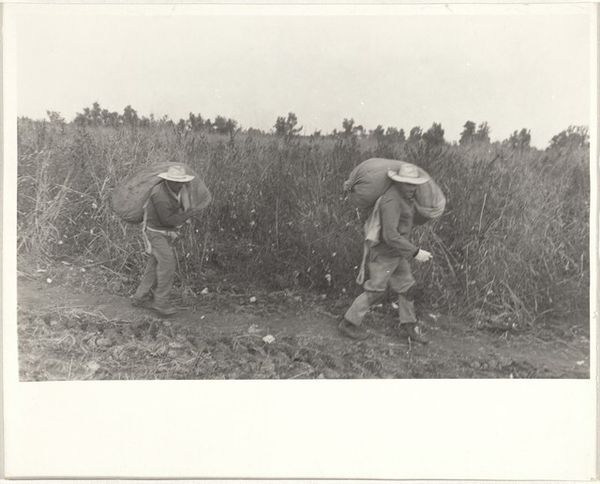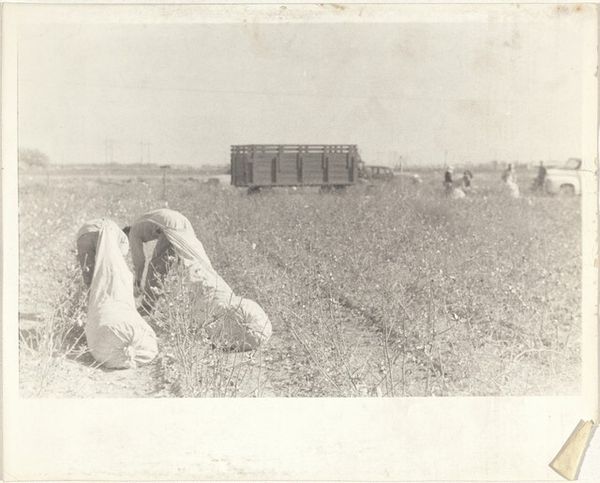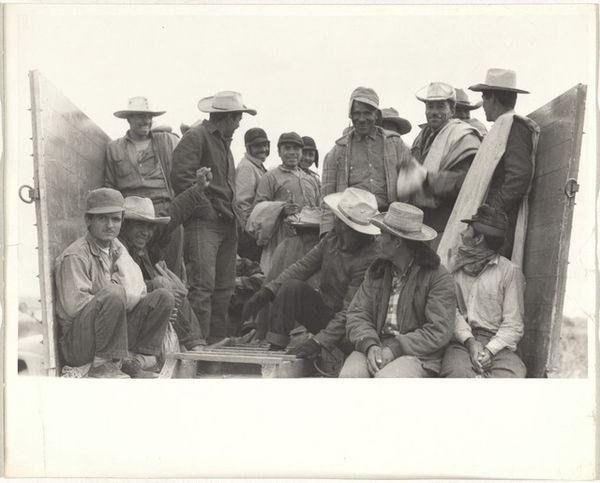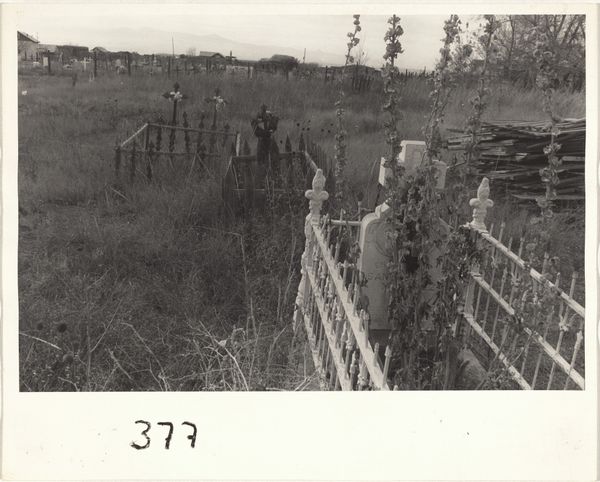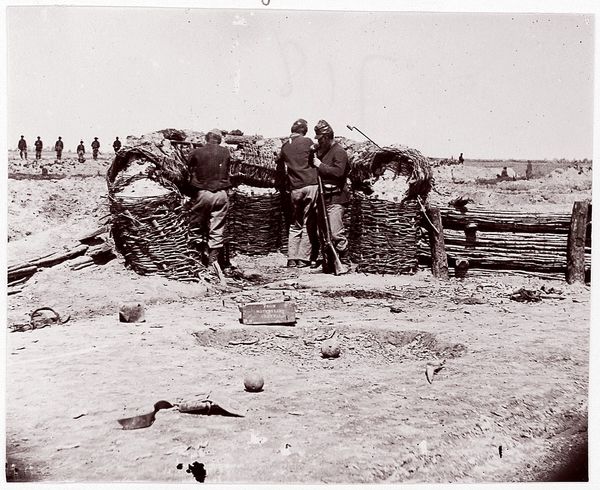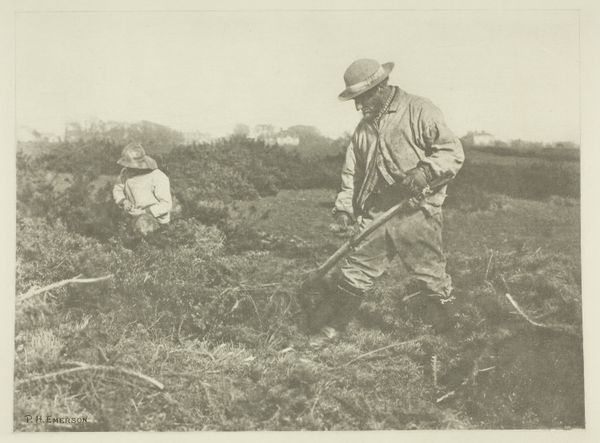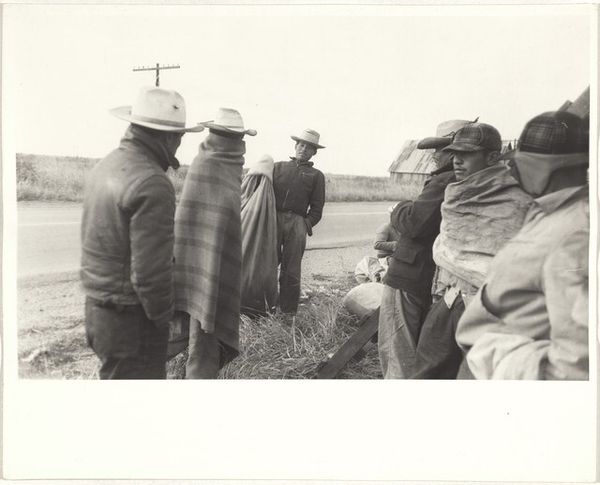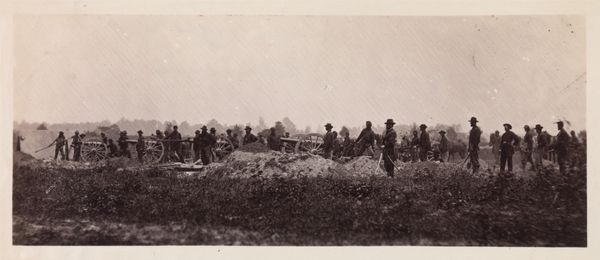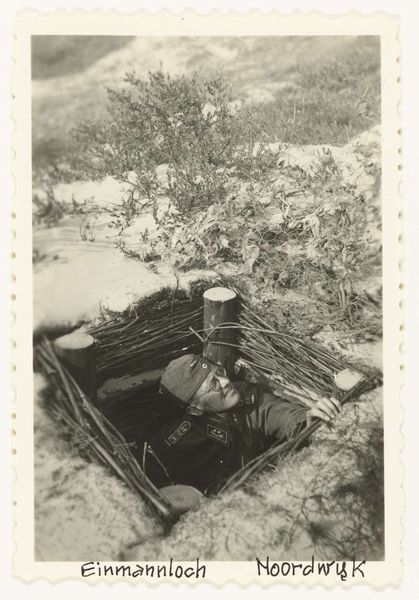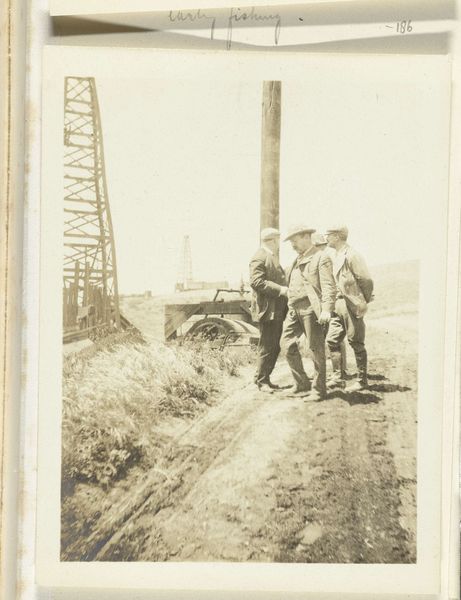
print, photography, gelatin-silver-print
#
print photography
# print
#
landscape
#
social-realism
#
photography
#
gelatin-silver-print
#
realism
Dimensions: sheet: 20.3 x 25.3 cm (8 x 9 15/16 in.)
Copyright: National Gallery of Art: CC0 1.0
Editor: Robert Frank’s “Cotton harvesters near truck – Arkansas,” captured in 1955, strikes me as a scene of both labor and weary rest. The stark contrasts in this gelatin silver print really bring out the rough textures. What catches your eye, and how do you interpret this work within its historical context? Curator: What I see is a deliberate act of social commentary. Frank's positioning of the workers relative to the truck speaks volumes about their socio-economic standing and the power structures at play. The year is important, 1955, a time of significant racial tension and inequality in the American South. The photograph becomes a document of that era, revealing the harsh realities of labor and the subtle yet powerful ways in which these realities were often ignored or romanticized in mainstream imagery. Do you see how the framing of the shot, specifically the subjects and the back of the truck full of product, adds to this narrative? Editor: Yes, the framing does highlight that, particularly with one figure emerging directly from the field of cotton itself, and the other next to a filled truck, as if physically tethered to the cotton production. It almost feels like it's indicting an industry for using vulnerable groups for the difficult and physically demanding task of harvest. Do you think Frank intended to create that kind of indictment? Curator: Absolutely. Frank wasn't just documenting; he was using his camera as a tool for social critique. Considering the Swiss photographer's position as an outsider in America at that time, his ability to capture these images—often in a raw, unfiltered way—became a powerful statement on the American social landscape. What I would be more interested to learn more about is how this image, created as one of several images from *The Americans*, circulated in galleries or through publications. These channels ultimately decide its accessibility and power for audiences to question such economic models as represented in the image. Editor: It’s really interesting to think about how the impact of the image hinges not only on what it depicts, but also on where and how it’s seen. I had never considered Frank's “outsider” perspective as adding another layer to the photograph and, thus, a better tool to bring that change. Thank you for that additional context.
Comments
No comments
Be the first to comment and join the conversation on the ultimate creative platform.
